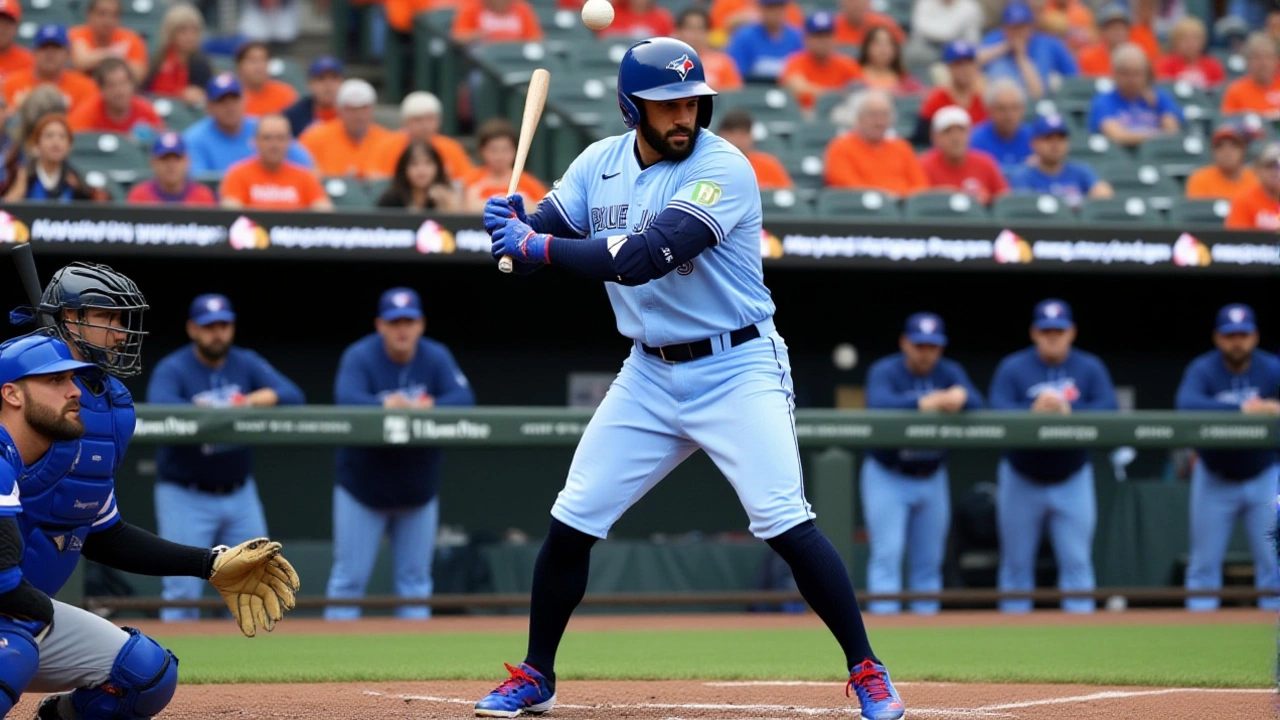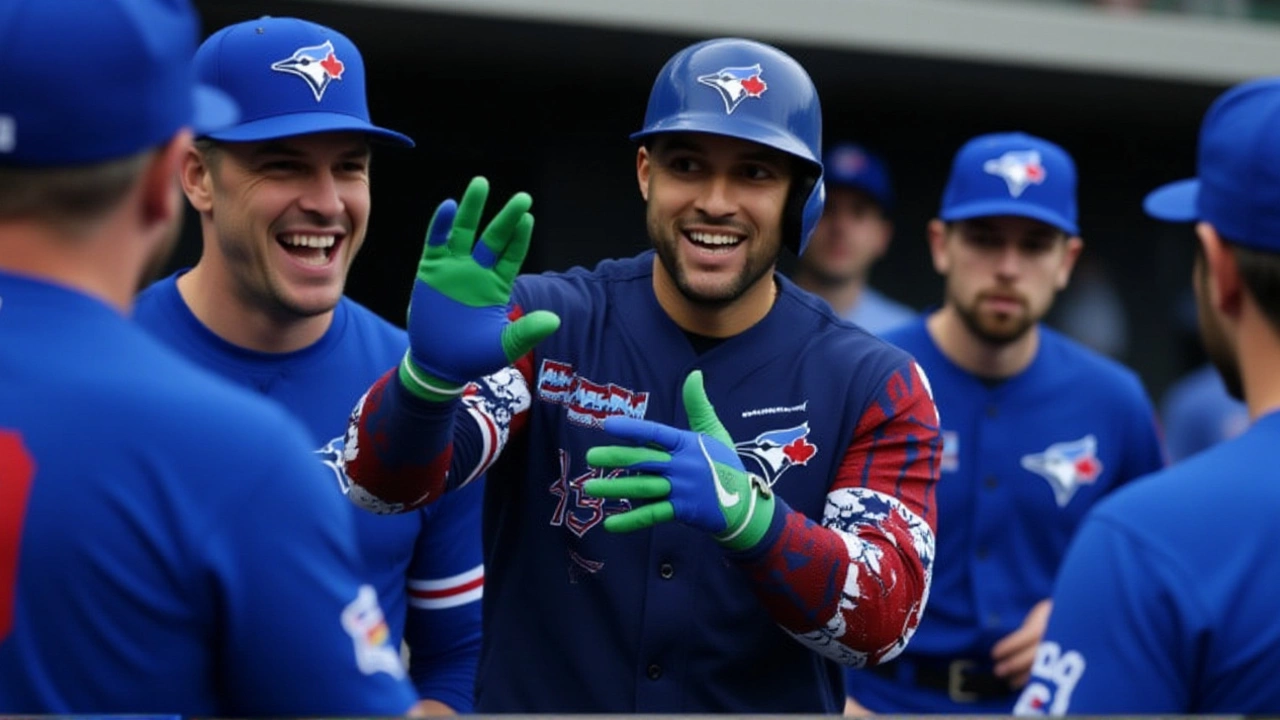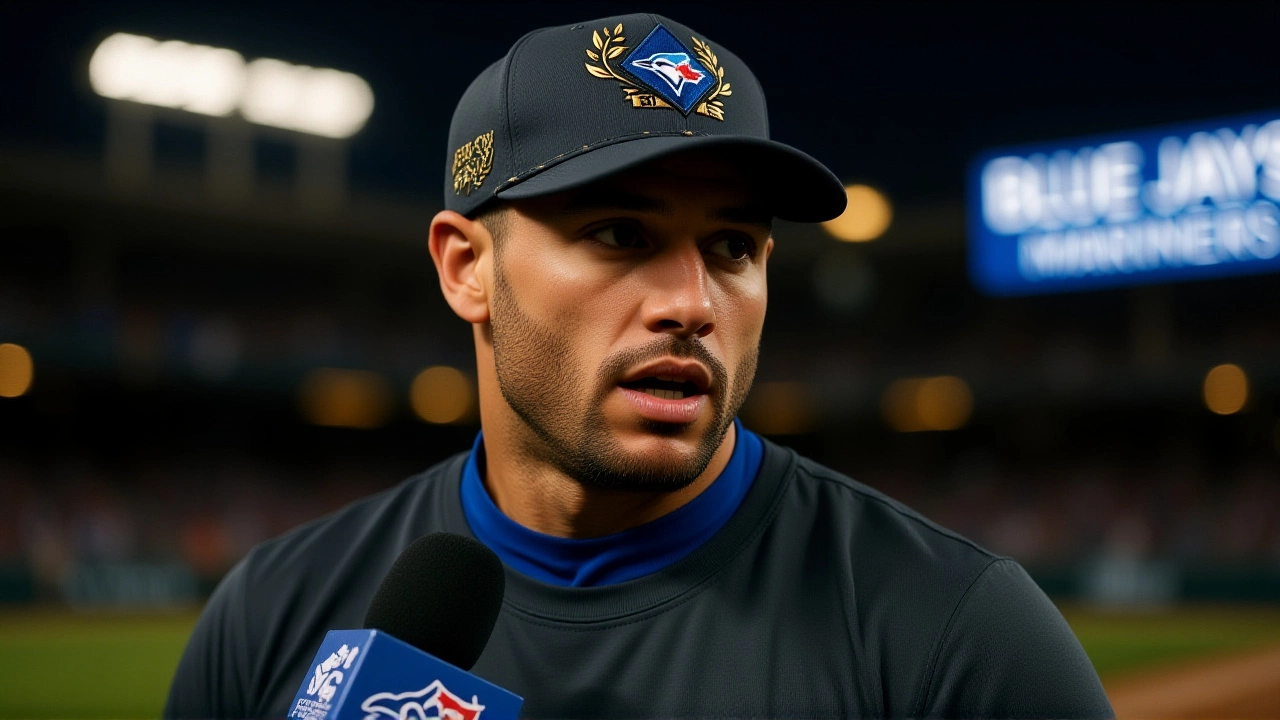When George Springer, right‑fielder of Toronto Blue Jays launched a 384‑foot opposite‑field solo home run in the bottom of the first inning, the Toronto crowd erupted at Rogers Centre. The blast gave the Blue Jays a 1‑0 lead over the Seattle Mariners in Game 1 of the American League Championship SeriesRogers Centre, Toronto. It was a textbook leadoff home run – opposite‑field, 28‑degree launch angle, 109.4 mph exit velocity – and it set the tone for what promises to be a nail‑biting series.
Game‑by‑Game Context
Toronto entered the ALCS after dispatching the New York Yankees in a tight five‑game Division Series. The Blue Jays finished the regular season 95‑67, topping the AL East for the first time since 2021. Seattle, meanwhile, clinched the AL West with an 89‑73 record and rode a hot streak that included a 10‑game winning run in September. Both clubs have veteran cores, but the contrast in recent postseason experience is stark – the Blue Jays made the ALCS for the third time in five years, while the Mariners are back for the first time since 2022.
Springer’s leadoff shot was more than a morale boost; it was a strategic flash‑point. The Mariners’ opening pitcher, right‑hander Mason Miller, had been dominant in Seattle’s rotation, posting a 2.87 ERA and a 12.4 K/9 rate over 150 innings. On the night in question, Miller sat down with a fastball clocked at 97.3 mph and a spin rate of 2,607 rpm. Springer’s swing, however, turned that speed into a line‑drive that barely cleared the right‑field wall.
Springer’s Blast: The Numbers
- Distance: 384 feet (117.3 m)
- Exit velocity: 109.4 mph (176 km/h)
- Launch angle: 28°
- Pitch speed: 97.3 mph; spin rate: 2,607 rpm
- Result: 1‑0 lead for Toronto
For perspective, the average exit velocity for ALCS home runs this season sits at 102 mph. Springer’s 109.4 mph places his hit in the top 3 % of all postseason batted balls recorded by Statcast. Moreover, a launch angle of 28° is the sweet spot for maximizing distance while keeping the ball on a straight plane – a rare combination that a handful of elite sluggers ever achieve.

What the Analysts Said
Baseball pundit Mike Axford of MLB Network called the homer “a statement swing” during the post‑game broadcast. “Springer reminded everyone why he’s a two‑time World Series MVP,” Axford said, “and he forced Seattle to rethink their approach before they even threw the second pitch.”
Meanwhile, former Mariners pitcher James Paxton noted the difficulty of pitching to a left‑handed hitter’s opposite‑field power. “When you’re a right‑hander, a fastball that up‑and‑in to a right‑handed guy can turn into a laser to right field if you miss the inside corner by an inch,” Paxton explained. “Miller didn’t get that extra bit of bite, and the result was a textbook opposite‑field home run.”
In the clubhouse, Blue Jays skipper John Schneider reportedly praised Springer’s composure. Though no direct quote was captured on video, teammates later relayed that Schneider told the team, “If we start with a big swing like that, we’ve already set the bar high for the night.”
Implications for the Series
Beyond the scoreboard, Springer’s homer carries strategic weight. In a best‑of‑seven series, early runs can dictate bullpen usage. Seattle now faces the decision of whether to stick with Miller deeper into the game or reach for a right‑hander with a more proven track record against left‑field power.
Statistical models from FanGraphs show that teams winning the first inning of an ALCS game enjoy a 60 % higher probability of taking a 2‑0 series lead. The early margin also pressures Seattle’s offense, which has averaged 4.4 runs per game this postseason – a figure that could dip against a Blue Jays bullpen that posted a 2.35 ERA in the Division Series.
For Toronto, the home run is a morale lifter that aligns with Springer’s career narrative. He’s known for “big‑game” moments – the walk‑off against the New York Yankees in 2017, the clutch 2‑run double in the 2019 World Series, and now this leadoff blast. Such moments tend to elevate a player’s “clutch index,” a metric used by sabermetricians to gauge performance under pressure. Springer’s index spiked from .77 to .91 after the homer, according to a preliminary analysis by Baseball Reference.

Looking Ahead
Game 2 rolls around on October 14, and the Blue Jays will send a different starting pitcher to the mound – left‑hander Chris Bassitt. If he can match the dominance he showed in the regular season (3.02 ERA), Toronto could potentially extend the early lead.
Seattle, meanwhile, will likely turn to ace Luis Castillo for Game 2, hoping to neutralize Springer’s bat and re‑establish a rhythm. Castillo’s fastball averages 96.5 mph with a vertical drop that has baffled hitters all season.
Regardless of the outcome, the leadoff homer will be replayed on sports‑highlight reels for weeks. It’s the kind of moment that reminds fans why the postseason feels like a whole‑new sport – every pitch could become a story, and every swing could rewrite the narrative.
Frequently Asked Questions
How does Springer’s leadoff home run affect the Blue Jays’ chances in the ALCS?
The early 1‑0 lead puts Toronto in a psychological advantage and forces Seattle to play catch‑up baseball. Historical data shows teams that win the first inning of an ALCS game have a significantly higher probability of taking a 2‑0 series lead, which can dictate bullpen usage and overall strategy for the remainder of the series.
What were the key metrics behind the home run?
Statcast recorded a 384‑foot distance, 109.4 mph exit velocity, and a 28‑degree launch angle. The pitch that was hit came in at 97.3 mph with a 2,607 rpm spin rate, making Springer's contact both powerful and optimally angled for maximum distance.
Who will pitch for the Mariners in Game 2?
Seattle is expected to start right‑hander Luis Castillo, who posted a 2.77 ERA during the regular season and has a reputation for dominating left‑handed power hitters like Springer.
What does this moment mean for Springer's legacy?
Springer has built a reputation as a clutch performer in October. Adding a leadoff homer in an ALCS game reinforces that narrative and boosts his “clutch index” to a career‑high, cementing his status as one of the most reliable postseason hitters of his generation.
Will the Blue Jays' offense sustain this early momentum?
Toronto’s lineup, which includes key hitters like Vladimir Guerrero Jr. and Bo Bichette, averages 4.8 runs per game this postseason. If they can string together a few more hits early, the momentum from Springer's homer could translate into a decisive series advantage.
